Article Contents
What is Pool Flocculant?
Pool flocculant is a chemical that when added to water clumps together particles sending them to the bottom of the pool where they can then be vacuumed.
It works by clumping together particles suspended in the pool water, which are too small to be caught in the filter. By clumping them together, it makes them big enough to fall out of suspension to the bottom of the pool. They can then be removed by manual vacuuming.
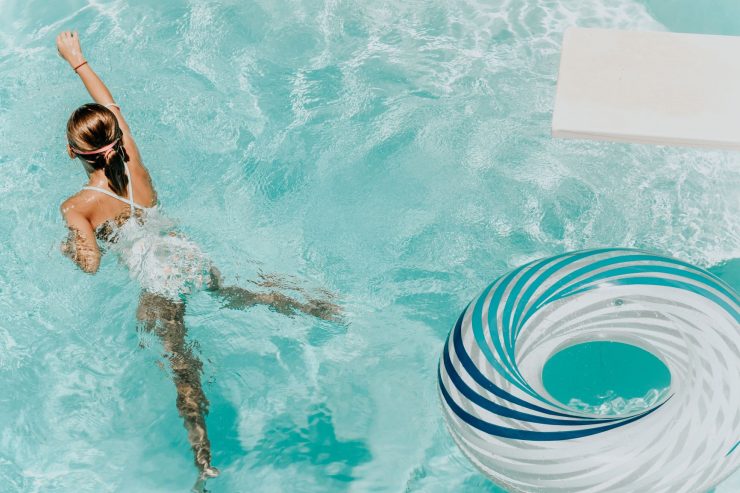
Particles which are too small to be picked up by the filter are what makes pool water cloudy. Flocculant is an effective way to remove these particles.
Flocculant is safe to use and is commonly used in water treatment plants.
When Do you Use Flocculant in Your Pool
Pool flocculant would not be my first choice to use when it comes to clearing cloudy pool water.
Why?
You’re generally better off not adding additional chemicals to your pool if you can help it. A correctly balanced pool with proper filtration should be enough to have clear water.
However, flocculant is a good choice if you have limited time to clear your pool water or the water is particularly cloudy – maybe you have a party the next day and the pool needs to look great.
- Swiftly clears up cloudy pool water by coagulating and sinking particles
- Removes silt, dead algae, organic matter, oils, and lotions
- Works in 8-12 hours
Quite a bit of manual work is involved to clean up the mess left by flocculant though. If you have a week or so, pool clarifier may be a better choice – more on clarifier later.
How Do You Use Flocculants in a Swimming Pool
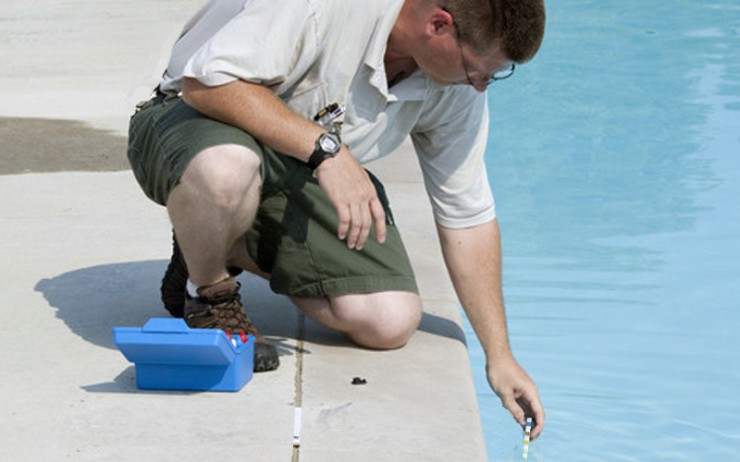
- Balance the Pool Water
It should be between 7.4 and 7.6 pH. Also, make sure the other levels are in the correct range. We recommend these water testing strips and this liquid test kit. - Add the Floc
Read the manufacturer’s directions and follow them. You’ll need to calculate the volume of water in your pool to do this.
As a general guide, you’ll measure the specified amount, dilute it and pour it around the edge of the pool. Careful, floc is powerful, so you don’t want to use too much flocculant. - Turn Your Pump onto “Recirculate”
Set the valve to recirculate and switch the pump on. Run it for a few hours. This will distribute the flocculant evenly throughout the pool water. Do NOT set it to filter. - Turn Off Your Pump and Wait 8+ Hours
Flocculant, although fast-acting, will still need around 8-16 hours to work its magic. It’s easiest to do this overnight. The pump definitely needs to be off as you want the water to be still. - Manually Vacuum The Pool
The floc will have settled at the bottom of the pool and will require manual vacuuming to remove the debris. An automatic pool cleaner won’t cut the mustard here.
Important: Set the filter to “waste” before you start vacuuming. You absolutely do not want that gunk clogging up your filter. You’ll be replacing the filter medium if it gets in there.
Tip: The key is to move slowly so you don’t stir up the debris too much. If you do stir it up, you may need to take a break to allow the debris to settle again.
It’s also a good idea to put the garden hose in the pool, to maintain the water level, whilst you are vacuuming. The level will go down quite a bit since you’ve set the pump to the “waste” setting.
You’ll likely need to vacuum the pool several times to remove all of the floc from the pool. - Rebalance the Pool Water
When you’re happy you’ve gotten all that debris out, set the valve back to “filter” mode and rebalance the water. Leave the filter running for 24 hours to get the water really clean.
Enjoy your clear water!
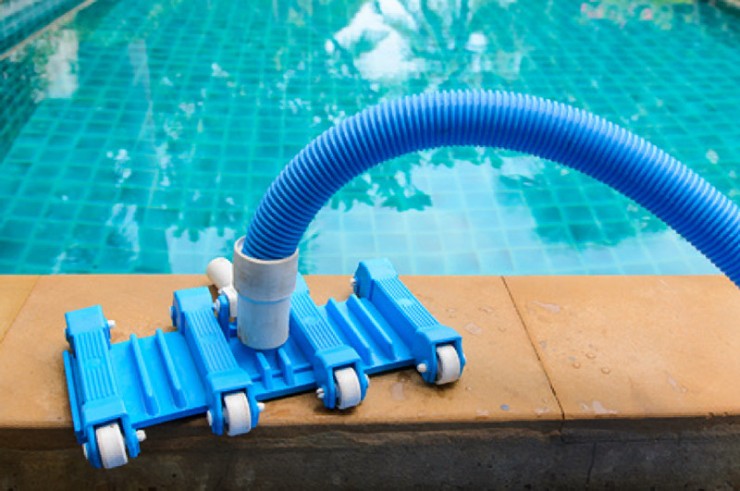
Can I use Flocculant with My Filter?
It’s not safe to use flocculant with all filter types. Sand filters, cartridge filters and diatomaceous earth (DE) filters are the most common filters for pool owners.
It’s not so much the type of filter you have that determines if it’s safe to use flocculant in your pool. It’s the plumbing. You’ll need to make sure you have a “waste” setting in the plumbing.
This is important because to remove flocculant from the pool, the pool will require vacuuming and you definitely do not want all that debris going through your filter. It will quickly clog up and you’ll then need to replace the filter medium.
Sand filters and DE filters are generally both safe to use with floc – since they normally always have a “waste” or “backwash” setting.
Cartridge filter systems do not generally have a “waste” or “backwash” setting. Unless they have custom plumbing and have and have a “waste” or “backwash” setting, they are NOT safe to use with flocculant.
Pool Flocculant Vs Pool Clarifier – What’s the Difference?
Flocculants are the heavy duty version of clarifiers.
Clarifiers work in a similar way where they clump together particles but instead of sending them to the bottom of the pool ready for manual vacuuming, they remain suspended in the water and can be filtered out.
Since they can be filtered out it takes a lot less manual work to use a clarifier. You can simply add it and switch on your filter and leave it be.
On the other hand, with floc, you’ll be spending a fair amount of time vacuuming your pool, plus you’ll get water wastage, which you don’t get with clarifier.
For more information on clarifier, check out our article on pool clarifier here.
Swimming Pool Flocculant Tips
- Ensure you set the filter to “Recirculate” when you initially add the floc to the water.
- Be sure you’ve calculated and measured the correct amount of floc.
- Allow 8-16 hours for the floc to work.
- Vacuum, vacuum and vacuum. Ensure the filter is set to waste when doing so.
Balance the water before and after adding floc.
How long before you can swim with flocculant in the pool?
It is recommended that you do not swim in the pool whilst using flocculant. The water needs to be still and not moving for the floc to work. Otherwise, the floc may not effectively clump together.
And if the debris has already sunk to the bottom after using floc, you will stir the debris back up which will mean you’ll need to wait for it to settle again before you can vacuum it out. As soon as you have finished vacuuming the flocculant debris up and have rebalanced the water, you can swim again.
Common Problems with Pool Flocculant
Pool floc not sinking
If you’ve added pool flocculant and it’s not sinking, there could be a few reasons:
- You didn’t wait long enough. Wait for up to 48 hrs for the floc to sink to the bottom.
- You left the pump circulating the water. The water needs to be still for pool flocculant to work.
- You have live algae. You must kill algae before using floc. See our article: Green Pool – Guide to Easily Preventing & Removing Pool Algae
- Not enough flocculant was added to the pool. Although uncommon this could be the cause. Wait 3-5 days before adding additional floc. Careful not to add too much.
- You may have something else sitting on the surface of the pool water. Skim this off.
How to Get Floc Out of Pool
If you’re having trouble or don’t know how to get the flocculant out of your pool or want to know how to vacuum a pool after flocking, here’s how.
First of all, set your filter valve to the “waste” setting. Now connect up the manual vacuum. An automatic cleaner will NOT work for this – sorry but you’ll need to put in some work.
The trick to getting floc out of a pool is to vacuum VERY slowly so you don’t stir up the debris. If you move too fast, you’ll create currents in the water which will disperse all that stuff sitting at the bottom.
If you have disturbed the debris at the bottom, take a break to allow it to settle on the bottom again. Come back in 30-60 mins and try again.
Pool Flocculant Not Working
There could be several reasons why pool flocculant isn’t working. It really depends what’s meant by not working.
If it isn’t sinking, see the section above about “Pool Floc Not Sinking”.
If however, you mean the pool floc isn’t clearing your cloudy water, that’s different. It could be because of:
- Live algae in the pool
- Other issues with the filter
- Pool water out of balance
- Debris in pool
We have a full article on clearing cloudy pool water.
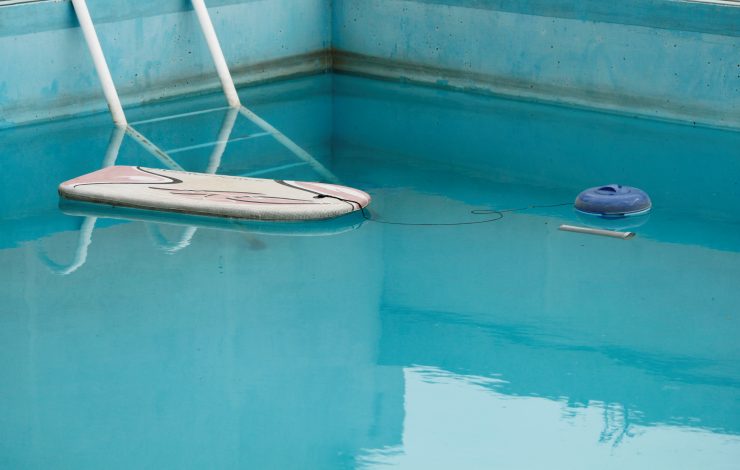
Too Much Flocculant in Pool
If you think you’ve added too much floc in the pool try waiting several days for it to sink to the bottom.
Sometimes there are other issues where instead of sinking the flocculant may remain suspended. You may then need to filter it out.
A word of warning if you choose to filter with floc in the water, the filter will more than likely completely clog up. This will mean you need to replace the filter medium. So do this only as a LAST resort.
Pool Still Cloudy After Flocculant
If the pool water is still cloudy after flocking your pool, there are likely other issues going on. For example:
- Environmental causes like pollen, debris, dust, sunscreen and contaminants, algae
- Filter not working well
- Excessive levels of pool chemicals
See our article on fixing cloudy pool water for more info.
Summary
To sum up, pool floc works well for clearing cloudy pool water quickly however it will require you to manually vacuum the pool several times. It usually takes 8-16 hours for floc to sink to the bottom of the pool ready for vacuuming.
When you do vacuum, you must set the filter valve to “waste” or “backwash” or you will clog your filter. Usually cartridge filters do not have the necessary plumbing to safely use floc.
And lastly, if you’re still having issues with cloudy pool water, something else isn’t right and you should check our article Cloudy Pool Water: Why & How to Remedy.
Happy Swimming!
Recommended Products
Pool Water Testing Strips Or Liquid Test Kit
Related Reading:
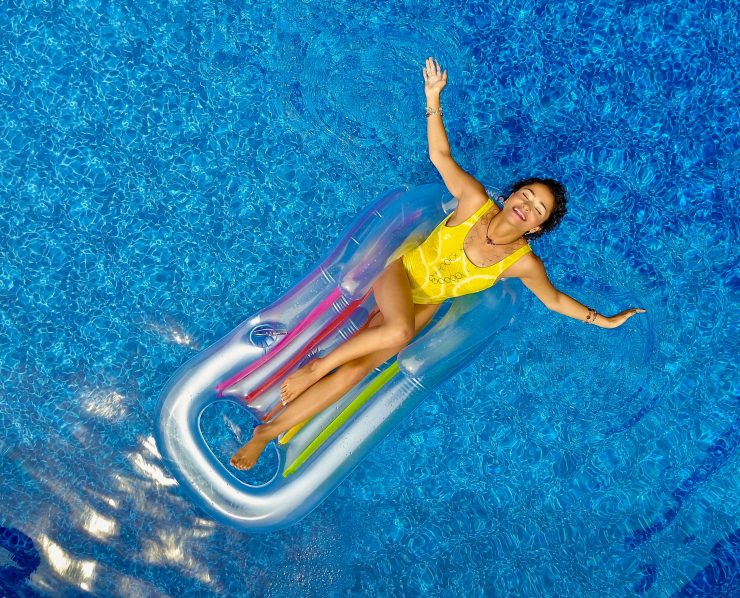



Having trouble getting all floculant out can it be removed in the de filter system by frequent backwashing
Flocculant is known to make a mess. It’s best to vacuum flocculant to waste. This will help prevent the filter clogging up with floc.